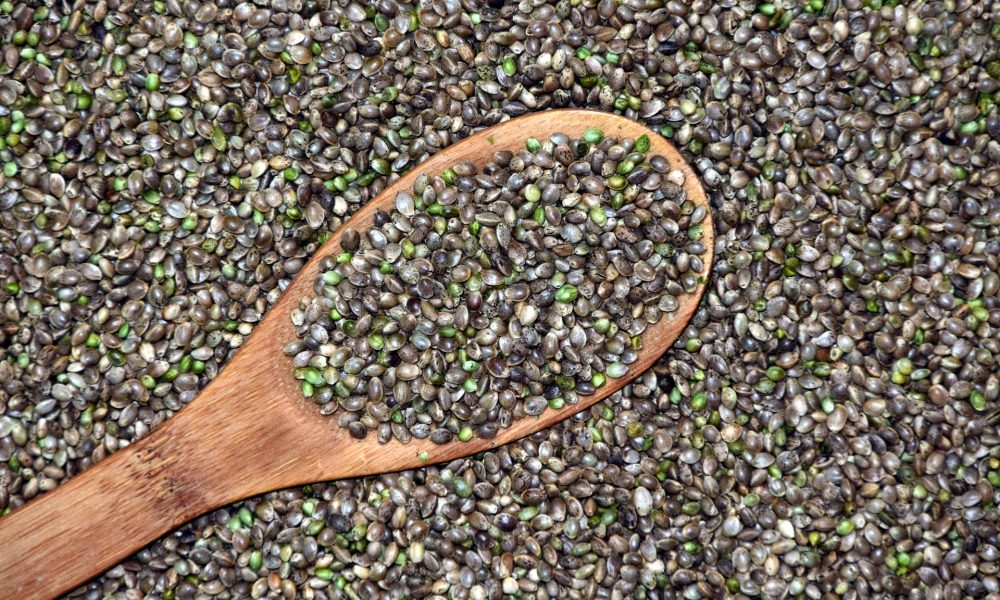The U.S. Department of Agriculture (USDA) began sending out thousands of surveys to hemp farmers across the country on Thursday as part of its annual effort to learn about how the market has evolved since the crop was federally legalized under the 2018 Farm Bill.
USDA launched its first annual survey in 2021 and released a report detailing the results the following year. Now the questionnaire has been revised to “improve data quality and reduce respondent burden,” USDA’s National Agricultural Statistics Service (NASS) said.
In general, the department is asking questions about plans for outdoor hemp production, acreage for operations, primary and secondary uses for the crop and what kinds of prices producers are able to bring in. The questionnaire lists preparations such as smokeable hemp, extracts like CBD, grain for human consumption, fiber and seeds as areas the department is interested in learning more about.
The Hemp Production, Disposition and Income Survey is now in the mail. The survey collects information on the acreage, yield, production, price, and value of #hemp in the United States. Respond online at https://t.co/MvrGnUXzN1 #AgStats #agriculture pic.twitter.com/9t5xcPaBZD
— National Agricultural Statistics Service (@usda_nass) January 19, 2023
The title of the form has been changed to the “Hemp Production and Disposition Inquiry” from the prior name of “Hemp Acreage and Production Survey,” and there are a series of other mostly technical revisions that are detailed in a supplementary report. For example, growers will be asked to report their acreage down to one-tenth of an acre, instead of one-fourth.
It also now asks if hemp grain was collected using a combine and whether the weight of hemp yields they document refer to “dry weight” measurements.
For the most part, however, the questionnaire is largely consistent with the prior version, which was approved following a review period by the White House. Results of the survey will be published on USDA’s website on April 19.
“The Hemp Production and Disposition Inquiry will provide critical data about the hemp industry to assist producers, regulatory agencies, state governments, processors and other key industry entities,” Mark Schleusener, USDA NASS statistician for Illinois, told AgriNews.
The survey also goes over whether farmers are hand-trimming the hemp they produce, if they plan to extract cannabinoids or terpenes from the crop, what kind of yields they’ve harvested and how they obtain the seeds and clones they use.
State agencies, such as the Minnesota Department of Agriculture, are encouraging farmers in their jurisdictions to participate in the survey.
MN #hemp growers: check your mailboxes! @usda_nass will be mailing out a hemp producer survey starting tomorrow, 1/19/23. #MNAg
Survey data will be published 4/19/23 & all information reported will be kept confidential. Check out 2021 survey results: https://t.co/KRDtpn9DKa pic.twitter.com/tWWeHNDJsY
— MN Agriculture Dept (@MNagriculture) January 18, 2023
In 2020, USDA announced plans to distribute a separate national survey to gain insights from thousands of hemp businesses that could inform its approach to regulating the industry.
That survey launched in partnership with National Association of State Departments of Agriculture and the University of Kentucky. The department said it wanted to learn about “current production costs, production practices, and marketing practices” for hemp.
Meanwhile, USDA announced last month that it is delaying enforcement of a rule requiring hemp to be tested at laboratories certified by the Drug Enforcement Administration (DEA) due to “inadequate” capacity of such facilities.
The DEA laboratory testing requirement will not go into effect on January 1 as originally planned. At earliest, the industry-contested rule will go into force on December 31.
Agriculture Secretary Tom Vilsack gave final approval to a broad federal rule laying out regulations for the hemp industry in 2021, despite the outstanding concerns from advocates about certain provisions.
The agency has separately taken also steps to improve insurance policies for hemp businesses, making them more flexible in response to stakeholder feedback.
USDA has made several moves to align hemp insurance policies with those of other lawful crops since the plant was federally legalized, consistently seeking out input from stakeholders as the industry matures.
In 2020, for example, the department made it so hemp farmers can qualify for Multi-Peril Crop Insurance, in addition to several other coverage programs for which the crop is now eligible.
USDA said in 2021 that it was teaming up with a chemical manufacturing company on a two-year project that could significantly expand the hemp-based cosmetics market.
As USDA implements the delayed enforcement action on DEA-registered laboratory testing, the Food and Drug Administration (FDA) continues to face pressure over the lack of regulations to allow for hemp and hemp-derived products in the food and dietary supplement supply.
A key GOP lawmaker said recently that he plans to take FDA officials to task over their failure to enact such regulations.
Late last year, top officials at the agency said they are months away from releasing a regulatory assessment on the issue, though FDA has maintained that it may take additional legislative work before it’s able to finalize such rules.
The market for hemp, CBD and more novel intoxicating cannabinoids like delta-8 THC is already widespread across the country. As such, FDA officials seem to increasingly recognize the urgency of rulemaking.
FDA officials have said that a couple of points that they are assessing concern whether CBD can be used safely in the long-term, and what impacts consumption might have during pregnancy. The rise in popularity of delta-8 THC products, which DEA says are not controlled substances, has further complicated rulemaking.
Read USDA’s 2021 Hemp Production and Disposition Inquiry below:
Michigan Marijuana Sales Hit Record High, Exceeding $221 Million In December, State Data Shows
Read the full article here









